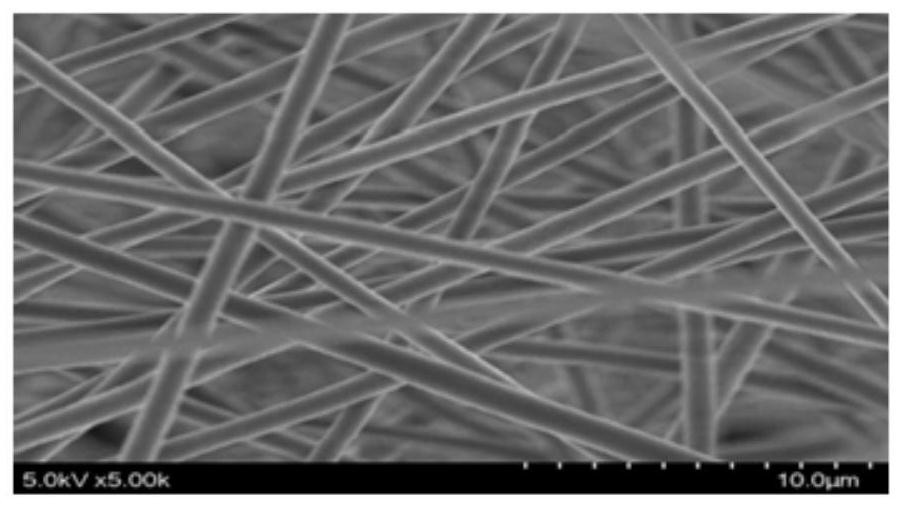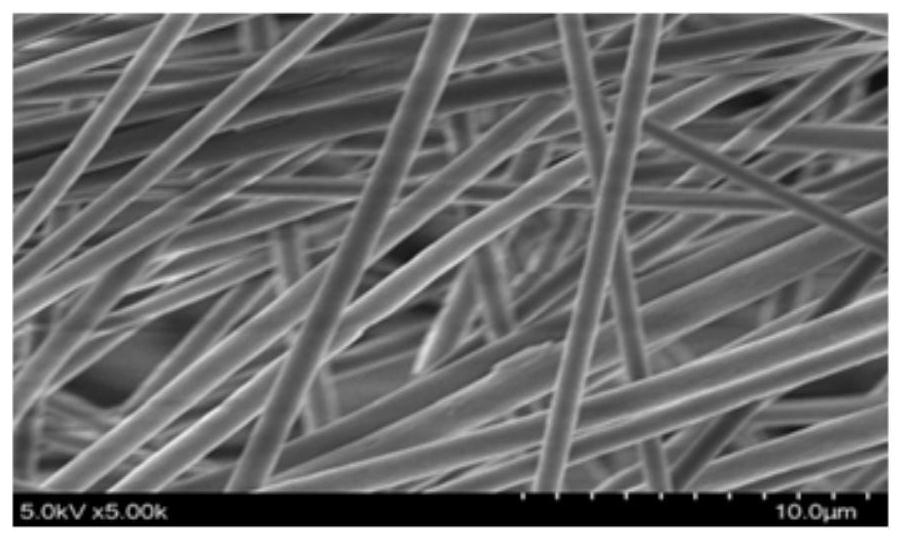Preparation method of antibacterial wound dressing capable of promoting healing
A technology of wound dressing and antibacterial agent, applied in the field of biomedical materials, can solve problems such as hindering the rapid healing of wounds, and achieve the effects of good biodegradability, good biocompatibility and strong improvement
- Summary
- Abstract
- Description
- Claims
- Application Information
AI Technical Summary
Problems solved by technology
Method used
Image
Examples
Embodiment 1
[0030] The specific preparation of hydrophilic modified polylactic acid:
[0031] Dissolve 3.6g of polylactic acid and 0.4g of 4-(2-aminoethyl)-1,2-benzenediol in 20ml of hexafluoroisopropanol to form a mixed solution, and heat the solution in a water bath at a temperature of 60-80 ℃, after heating for 3-4 hours, add 3ml of sodium sulfate solution into the mixed solution, stir at room temperature for 2 hours, obtain a precipitate after cooling, and dry to obtain modified polylactic acid.
Embodiment 2
[0033] (1) Take the hydrophilic modified polylactic acid and dissolve it in hexafluoroisopropanol with an electronic analytical balance to obtain a polylactic acid solution with a mass fraction of 10% (w / w), stir magnetically at room temperature for 5 hours until the solution is completely dissolved, Add berberine at a concentration of 0.20 g / mL, and stir magnetically for 2 h at room temperature to prepare a shell spinning solution.
[0034] (2) Dissolve sodium alginate in deionized water with an electronic analytical balance to obtain a sodium alginate solution with a mass fraction of 10% (w / w), and add a cation with a volume fraction of 5% in the sodium alginate solution ( K + ) solution for ion neutralization to reduce the degree of ionization of the solution, magnetically stirred at room temperature for 6 hours, then added ascorbic acid with a concentration of 0.10 g / mL, and magnetically stirred for 2 hours at room temperature to obtain a nuclear layer spinning solution. ...
Embodiment 3
[0037] (1) Take the hydrophilic modified polylactic acid (gained in Example 1) with an electronic analytical balance and dissolve it in the solvent hexafluoroisopropanol to obtain a polylactic acid solution with a mass fraction of 11% (w / w). Stir for 4 hours until the solute is completely dissolved, add berberine at a concentration of 0.30 g / mL, and magnetically stir for 2 hours at room temperature to prepare a shell spinning solution.
[0038] (2) Dissolve sodium alginate in deionized water with an electronic analytical balance to obtain a sodium alginate solution with a mass fraction of 11% (w / w) and add a 6% cation (Li + ) solution for ion neutralization to reduce the degree of ionization of the solution, magnetically stirred at room temperature for 5 hours, then added ascorbic acid with a concentration of 0.15 g / mL, and magnetically stirred for 2 hours at room temperature to obtain a nuclear layer spinning solution.
[0039] (3) Add the two solutions of the shell spinning ...
PUM
 Login to View More
Login to View More Abstract
Description
Claims
Application Information
 Login to View More
Login to View More - R&D
- Intellectual Property
- Life Sciences
- Materials
- Tech Scout
- Unparalleled Data Quality
- Higher Quality Content
- 60% Fewer Hallucinations
Browse by: Latest US Patents, China's latest patents, Technical Efficacy Thesaurus, Application Domain, Technology Topic, Popular Technical Reports.
© 2025 PatSnap. All rights reserved.Legal|Privacy policy|Modern Slavery Act Transparency Statement|Sitemap|About US| Contact US: help@patsnap.com



